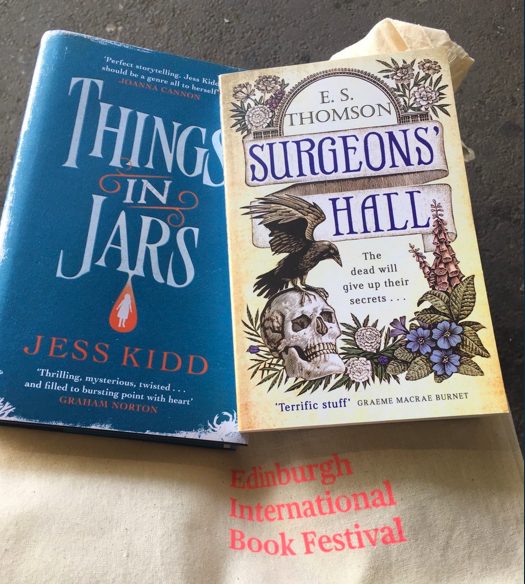Both of today’s authors have an interest in the macabre, the curious and the madness of medicine in the Victorian era. Anya Clayworth from the University of Edinburgh Centre for Open Learning introduces the authors and what follows is a fascinating discussion about what led them to this particular setting, historical accuracy, genre splicing and using female protagonists at a time when very few women were able to break into the elite professions.
Jess Kidd starts proceedings with a reading from her ‘genre spliced’ novel, Things in Jars, which follows Bridie Devine on a race against time to find the very unusual child, Christabel Berwick. Previously reviewed for the site we described it as “a novel which at times almost reads like poetry, so carefully worded are the descriptions and so heavily reliant on the imagery which paints the scenes so vividly.” Listening once more to Kidd read her description of Bridie’s sidekick and love interest, ghost boxer Ruby Doyle, supports this view.
The audience return to this point of ‘genre splicing’ at the end of the conversation, eager to find out what it truly is. Kidd describes it as a coming together of two genres which wouldn’t usually be considered together – in this case, crime and magic. Whatever it is, it works beautifully.
A severed hand opens E S Thomson’s reading from her fourth book of the Jem Flockhart series, Surgeons’ Hall, she too drawing on the grimy world of curiosity for her stories. With a PhD in the History of Medicine, Thomson is perfectly placed to take her characters on a fictional journey through a historically accurate world and this is something which both authors discuss as being vitally important in shaping their works.
Most in the audience seemed to have read one of these two novels before the talk, familiar with one author and not the other. No doubt they will now race to buy the other writer’s work.
